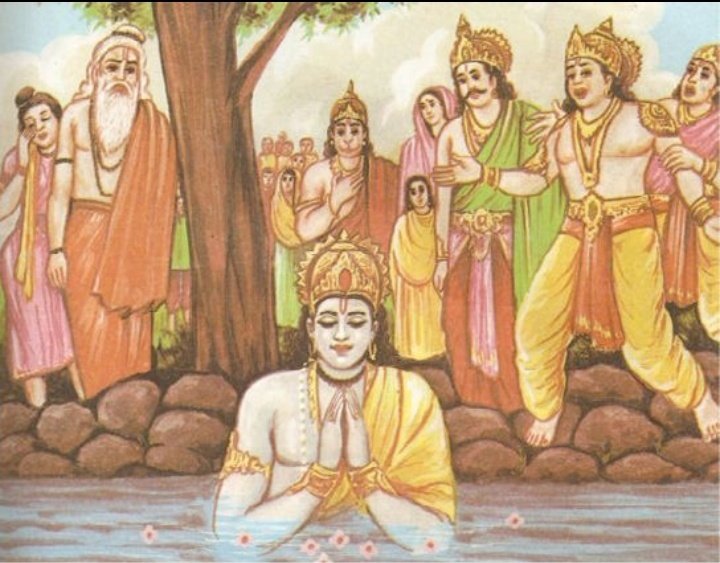(1/n) Many fake things are going around about Sati and jauhar by these idiots, in this thread I am going to bust the myths about them from historical perspective.
{THREAD} https://twitter.com/SyedMaj31697545/status/1309572573123010561">https://twitter.com/SyedMaj31...
{THREAD} https://twitter.com/SyedMaj31697545/status/1309572573123010561">https://twitter.com/SyedMaj31...
(2/n) Jauhar and Sati, the women walked into fire and gave up their life voluntarily, there is a fundamental difference.
Jauhar was committed when the husband was still alive whereas Sati was committed after the husband’s death.
Jauhar was committed when the husband was still alive whereas Sati was committed after the husband’s death.
(3/n)Jauhar was resorted to by women when they were certain that their husband was going to die in battle. Rather than live as a widow or join him as a widow in the funeral pyre, they chose Jauhar, to die as a married woman even before his death.
Edifice to mark the spot where Rani Padmini and the other women of Chittor committed Jauhar to escape the clutches of Allaudin Khilji, the Sultan of Delhi in 1303 CE. https://abs.twimg.com/emoji/v2/... draggable="false" alt="👇" title="Rückhand Zeigefinger nach unten" aria-label="Emoji: Rückhand Zeigefinger nach unten">
https://abs.twimg.com/emoji/v2/... draggable="false" alt="👇" title="Rückhand Zeigefinger nach unten" aria-label="Emoji: Rückhand Zeigefinger nach unten"> https://abs.twimg.com/emoji/v2/... draggable="false" alt="👇" title="Rückhand Zeigefinger nach unten" aria-label="Emoji: Rückhand Zeigefinger nach unten">
https://abs.twimg.com/emoji/v2/... draggable="false" alt="👇" title="Rückhand Zeigefinger nach unten" aria-label="Emoji: Rückhand Zeigefinger nach unten">
(4/n) Jauhar was also resorted to by Indian women as a way of saving their honour from ruthless invaders.
Madri committing Sati after Pandu’s death as Kunti and the 5 Pandava princes watch sadly. https://abs.twimg.com/emoji/v2/... draggable="false" alt="👇" title="Rückhand Zeigefinger nach unten" aria-label="Emoji: Rückhand Zeigefinger nach unten">
https://abs.twimg.com/emoji/v2/... draggable="false" alt="👇" title="Rückhand Zeigefinger nach unten" aria-label="Emoji: Rückhand Zeigefinger nach unten"> https://abs.twimg.com/emoji/v2/... draggable="false" alt="👇" title="Rückhand Zeigefinger nach unten" aria-label="Emoji: Rückhand Zeigefinger nach unten">
https://abs.twimg.com/emoji/v2/... draggable="false" alt="👇" title="Rückhand Zeigefinger nach unten" aria-label="Emoji: Rückhand Zeigefinger nach unten">
Madri committing Sati after Pandu’s death as Kunti and the 5 Pandava princes watch sadly.
(5/n) Meaning of Sati:-
The word Sati has its etymological roots in Sat which means truth
 https://abs.twimg.com/emoji/v2/... draggable="false" alt="☝️" title="Zeigefinger nach oben" aria-label="Emoji: Zeigefinger nach oben"> Sati was an act of self-immolation by a woman, by joining the funeral pyre of her husband. It was the widow’s way of embracing the ultimate truth, of a life without her beloved,
https://abs.twimg.com/emoji/v2/... draggable="false" alt="☝️" title="Zeigefinger nach oben" aria-label="Emoji: Zeigefinger nach oben"> Sati was an act of self-immolation by a woman, by joining the funeral pyre of her husband. It was the widow’s way of embracing the ultimate truth, of a life without her beloved,
The word Sati has its etymological roots in Sat which means truth
(6/n) of an existence beyond physical bodies, of a faith of coming back again in a new form and a new life with a new meaning.
(7/n) Rani Yasomati’s Sati 1400 Years Ago :-
During the time of Emperor Harshavardhana as a young prince. His father King ‘Prabhakaravardhana’ was on his death-bed. No amount of medicines nor prayers seemed to help.
During the time of Emperor Harshavardhana as a young prince. His father King ‘Prabhakaravardhana’ was on his death-bed. No amount of medicines nor prayers seemed to help.
(8/n) His life was slowly ebbing away, when his wife, the Queen and Harsha’s mother, Rani Yasomati, decided that she wanted to end her life before her husband did, so that she would not become a widow.
(9/n) Queen Yasomati pleading with Harsha to respect her wishes to commit Sati. https://abs.twimg.com/emoji/v2/... draggable="false" alt="👇" title="Rückhand Zeigefinger nach unten" aria-label="Emoji: Rückhand Zeigefinger nach unten">
https://abs.twimg.com/emoji/v2/... draggable="false" alt="👇" title="Rückhand Zeigefinger nach unten" aria-label="Emoji: Rückhand Zeigefinger nach unten"> https://abs.twimg.com/emoji/v2/... draggable="false" alt="👇" title="Rückhand Zeigefinger nach unten" aria-label="Emoji: Rückhand Zeigefinger nach unten"> (Pic)
https://abs.twimg.com/emoji/v2/... draggable="false" alt="👇" title="Rückhand Zeigefinger nach unten" aria-label="Emoji: Rückhand Zeigefinger nach unten"> (Pic)
{From “Harshacharita The Fifth Ucchhvasa”,an English translation by C. Sankara Rama Sastry of the 5th Chapter of Harshacharita, the chapter devoted to the death of King Prabhakaravardhana}
{From “Harshacharita The Fifth Ucchhvasa”,an English translation by C. Sankara Rama Sastry of the 5th Chapter of Harshacharita, the chapter devoted to the death of King Prabhakaravardhana}
(10/n) Sati Due To Islamic Invasion 1000 Years Ago:-
This practice of Sati became widespread in India post 1000 CE, when there were repeated onslaughts by Islamic invasions. The act of Sati then, became a regular protective practice, an alternate tool for
This practice of Sati became widespread in India post 1000 CE, when there were repeated onslaughts by Islamic invasions. The act of Sati then, became a regular protective practice, an alternate tool for
(11/n) Self-defence to escape from the clutches of the invaders, especially after losing the protective guard in the form of one’s husband.
NO SATI FOR SELF DEFENCE PRIOR TO ISLAMIC INVASION
NO SATI FOR SELF DEFENCE PRIOR TO ISLAMIC INVASION
(12/n) One visitor, who had observed this and was amazed at this self-restraint was Megasthenes, the Greek chronicler, who had come along with Alexander of Macedonia in 326 BCE. He chronicled his observations on the concept of Dharma Yuddha in his book Indica, wherein he writes https://abs.twimg.com/emoji/v2/... draggable="false" alt="👇" title="Rückhand Zeigefinger nach unten" aria-label="Emoji: Rückhand Zeigefinger nach unten">
https://abs.twimg.com/emoji/v2/... draggable="false" alt="👇" title="Rückhand Zeigefinger nach unten" aria-label="Emoji: Rückhand Zeigefinger nach unten">
(13/n) Francois Bernier, a French traveller who visited Bengal between 1656 and 1668 CE, wrote about what he saw in India, in his book “Travels in the Mogul Empire”.
He narrates his experience of encountering a Sati procession. The young widowed woman going
He narrates his experience of encountering a Sati procession. The young widowed woman going
(14/n) for her Sati, spoke to him cheerfully, as she expressed her intent to join her beloved husband. Sati was not being forced on her. This was 400 years ago in 1660 CE.
(15/n) Sati type practice in Japan:-
In the far east, in Japan, women committed suicide called ‘Jigai’ which was a female version of ‘Seppuku’. This was for the woman to follow her husband to death. Here the women bound their legs together to maintain a decent posture in agony.
In the far east, in Japan, women committed suicide called ‘Jigai’ which was a female version of ‘Seppuku’. This was for the woman to follow her husband to death. Here the women bound their legs together to maintain a decent posture in agony.
(16/n) This was done to avoid rape in military defeat.
Men Also Resorted to end lives out of choice, Sati was a choice exercised by widowed women, at the time of the death of their husband, Samadhi was a choice exercised by both men and women at any stage in their life.
Men Also Resorted to end lives out of choice, Sati was a choice exercised by widowed women, at the time of the death of their husband, Samadhi was a choice exercised by both men and women at any stage in their life.
(17/n)
1. Agni Samadhi – by fire
2. Jala Samadhi – by water
3. Jeeva Samadhi – being entombed when alive
4. Bhookha Samadhi – by starving
There are many examples of men who had entered Samadhi.
1. Agni Samadhi – by fire
2. Jala Samadhi – by water
3. Jeeva Samadhi – being entombed when alive
4. Bhookha Samadhi – by starving
There are many examples of men who had entered Samadhi.
(18/n) Adi Sankara’s times :-
Adi Sankara, before He entered into the famous Tarka, debate with Mandana Misra, had first approached the Guru of Mandana Misra named Kumarila Bhatta.
Kumarila Bhatta was one of the greatest Samskrt scholars and philosophers of the land.
Adi Sankara, before He entered into the famous Tarka, debate with Mandana Misra, had first approached the Guru of Mandana Misra named Kumarila Bhatta.
Kumarila Bhatta was one of the greatest Samskrt scholars and philosophers of the land.
(19/n) Panel displaying Adi Sankara’s meeting with Kumarila Bhatta at Prayag - A Case of Agni Samadhi
Source – Sri Kanchi Sankara Math, Prayag https://abs.twimg.com/emoji/v2/... draggable="false" alt="👇" title="Rückhand Zeigefinger nach unten" aria-label="Emoji: Rückhand Zeigefinger nach unten">
https://abs.twimg.com/emoji/v2/... draggable="false" alt="👇" title="Rückhand Zeigefinger nach unten" aria-label="Emoji: Rückhand Zeigefinger nach unten"> https://abs.twimg.com/emoji/v2/... draggable="false" alt="👇" title="Rückhand Zeigefinger nach unten" aria-label="Emoji: Rückhand Zeigefinger nach unten">
https://abs.twimg.com/emoji/v2/... draggable="false" alt="👇" title="Rückhand Zeigefinger nach unten" aria-label="Emoji: Rückhand Zeigefinger nach unten"> https://abs.twimg.com/emoji/v2/... draggable="false" alt="👇" title="Rückhand Zeigefinger nach unten" aria-label="Emoji: Rückhand Zeigefinger nach unten">
https://abs.twimg.com/emoji/v2/... draggable="false" alt="👇" title="Rückhand Zeigefinger nach unten" aria-label="Emoji: Rückhand Zeigefinger nach unten">
Source – Sri Kanchi Sankara Math, Prayag
(20/n Many scholars and prominent persons have entered the rivers to attain Jala Samadhi. The most notable among them is King Rama, the son of Dasaratha, who after handing over the kingdom to His sons, entered the Sarayu River to attain Jala Samadhi.
SOURCE- AUTOBIOGRAPHY OF INDIA BREAKING MYTHS ABOUT SOCIETY.
https://twitter.com/VedicWisdom1/status/1274336739687952387?s=19">https://twitter.com/VedicWisd...
I NOWHERE SUPPORTED SATI PRATHA, I JUST THE FACTS.
THOSE WHO FEEL I AM SUPPORTING IT ARE IDIOT.
PUTTING FACTS DO NOT MEAN SUPPORTING IT
THOSE WHO FEEL I AM SUPPORTING IT ARE IDIOT.
PUTTING FACTS DO NOT MEAN SUPPORTING IT

 Read on Twitter
Read on Twitter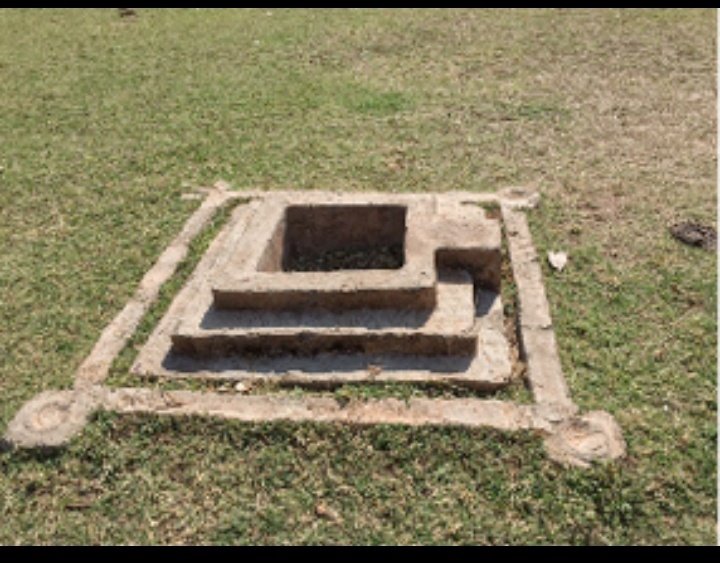 https://abs.twimg.com/emoji/v2/... draggable="false" alt="👇" title="Rückhand Zeigefinger nach unten" aria-label="Emoji: Rückhand Zeigefinger nach unten">" title="Edifice to mark the spot where Rani Padmini and the other women of Chittor committed Jauhar to escape the clutches of Allaudin Khilji, the Sultan of Delhi in 1303 CE.https://abs.twimg.com/emoji/v2/... draggable="false" alt="👇" title="Rückhand Zeigefinger nach unten" aria-label="Emoji: Rückhand Zeigefinger nach unten">https://abs.twimg.com/emoji/v2/... draggable="false" alt="👇" title="Rückhand Zeigefinger nach unten" aria-label="Emoji: Rückhand Zeigefinger nach unten">" class="img-responsive" style="max-width:100%;"/>
https://abs.twimg.com/emoji/v2/... draggable="false" alt="👇" title="Rückhand Zeigefinger nach unten" aria-label="Emoji: Rückhand Zeigefinger nach unten">" title="Edifice to mark the spot where Rani Padmini and the other women of Chittor committed Jauhar to escape the clutches of Allaudin Khilji, the Sultan of Delhi in 1303 CE.https://abs.twimg.com/emoji/v2/... draggable="false" alt="👇" title="Rückhand Zeigefinger nach unten" aria-label="Emoji: Rückhand Zeigefinger nach unten">https://abs.twimg.com/emoji/v2/... draggable="false" alt="👇" title="Rückhand Zeigefinger nach unten" aria-label="Emoji: Rückhand Zeigefinger nach unten">" class="img-responsive" style="max-width:100%;"/>
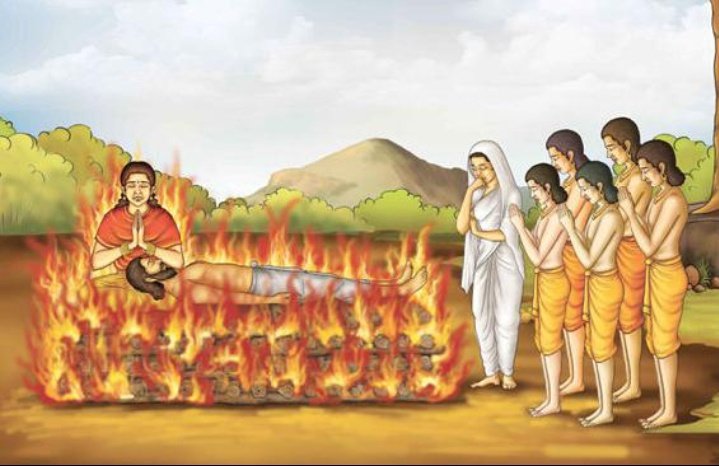 https://abs.twimg.com/emoji/v2/... draggable="false" alt="👇" title="Rückhand Zeigefinger nach unten" aria-label="Emoji: Rückhand Zeigefinger nach unten">" title="(4/n) Jauhar was also resorted to by Indian women as a way of saving their honour from ruthless invaders.Madri committing Sati after Pandu’s death as Kunti and the 5 Pandava princes watch sadly. https://abs.twimg.com/emoji/v2/... draggable="false" alt="👇" title="Rückhand Zeigefinger nach unten" aria-label="Emoji: Rückhand Zeigefinger nach unten">https://abs.twimg.com/emoji/v2/... draggable="false" alt="👇" title="Rückhand Zeigefinger nach unten" aria-label="Emoji: Rückhand Zeigefinger nach unten">" class="img-responsive" style="max-width:100%;"/>
https://abs.twimg.com/emoji/v2/... draggable="false" alt="👇" title="Rückhand Zeigefinger nach unten" aria-label="Emoji: Rückhand Zeigefinger nach unten">" title="(4/n) Jauhar was also resorted to by Indian women as a way of saving their honour from ruthless invaders.Madri committing Sati after Pandu’s death as Kunti and the 5 Pandava princes watch sadly. https://abs.twimg.com/emoji/v2/... draggable="false" alt="👇" title="Rückhand Zeigefinger nach unten" aria-label="Emoji: Rückhand Zeigefinger nach unten">https://abs.twimg.com/emoji/v2/... draggable="false" alt="👇" title="Rückhand Zeigefinger nach unten" aria-label="Emoji: Rückhand Zeigefinger nach unten">" class="img-responsive" style="max-width:100%;"/>
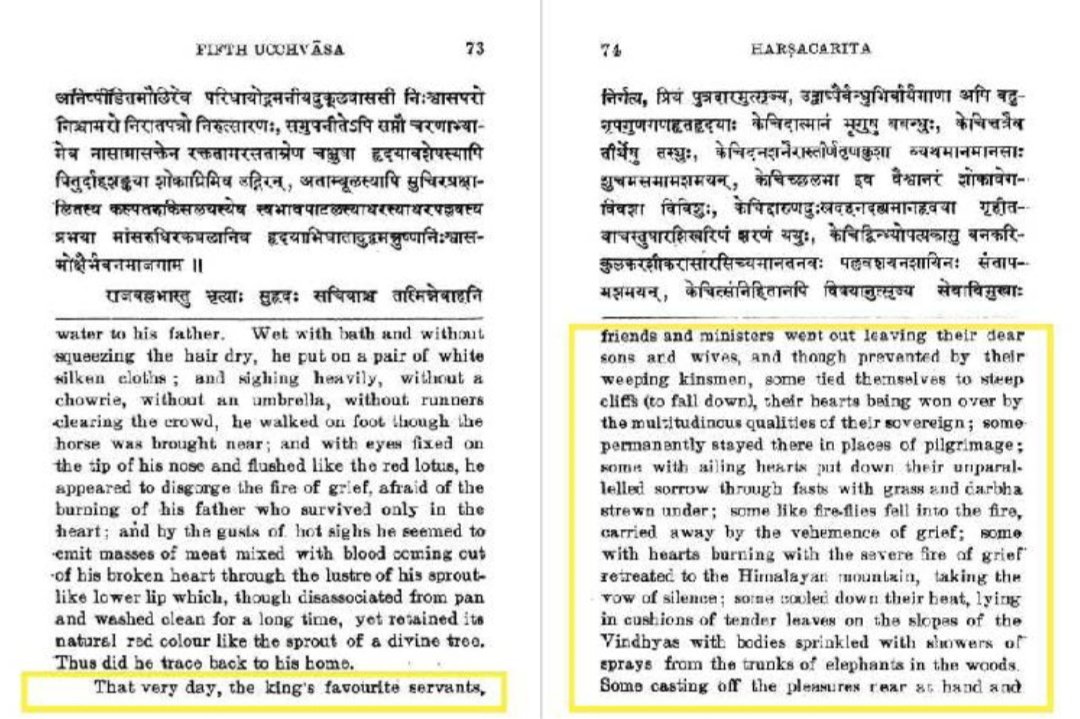 https://abs.twimg.com/emoji/v2/... draggable="false" alt="👇" title="Rückhand Zeigefinger nach unten" aria-label="Emoji: Rückhand Zeigefinger nach unten"> (Pic){From “Harshacharita The Fifth Ucchhvasa”,an English translation by C. Sankara Rama Sastry of the 5th Chapter of Harshacharita, the chapter devoted to the death of King Prabhakaravardhana}" title="(9/n) Queen Yasomati pleading with Harsha to respect her wishes to commit Sati.https://abs.twimg.com/emoji/v2/... draggable="false" alt="👇" title="Rückhand Zeigefinger nach unten" aria-label="Emoji: Rückhand Zeigefinger nach unten">https://abs.twimg.com/emoji/v2/... draggable="false" alt="👇" title="Rückhand Zeigefinger nach unten" aria-label="Emoji: Rückhand Zeigefinger nach unten"> (Pic){From “Harshacharita The Fifth Ucchhvasa”,an English translation by C. Sankara Rama Sastry of the 5th Chapter of Harshacharita, the chapter devoted to the death of King Prabhakaravardhana}" class="img-responsive" style="max-width:100%;"/>
https://abs.twimg.com/emoji/v2/... draggable="false" alt="👇" title="Rückhand Zeigefinger nach unten" aria-label="Emoji: Rückhand Zeigefinger nach unten"> (Pic){From “Harshacharita The Fifth Ucchhvasa”,an English translation by C. Sankara Rama Sastry of the 5th Chapter of Harshacharita, the chapter devoted to the death of King Prabhakaravardhana}" title="(9/n) Queen Yasomati pleading with Harsha to respect her wishes to commit Sati.https://abs.twimg.com/emoji/v2/... draggable="false" alt="👇" title="Rückhand Zeigefinger nach unten" aria-label="Emoji: Rückhand Zeigefinger nach unten">https://abs.twimg.com/emoji/v2/... draggable="false" alt="👇" title="Rückhand Zeigefinger nach unten" aria-label="Emoji: Rückhand Zeigefinger nach unten"> (Pic){From “Harshacharita The Fifth Ucchhvasa”,an English translation by C. Sankara Rama Sastry of the 5th Chapter of Harshacharita, the chapter devoted to the death of King Prabhakaravardhana}" class="img-responsive" style="max-width:100%;"/>
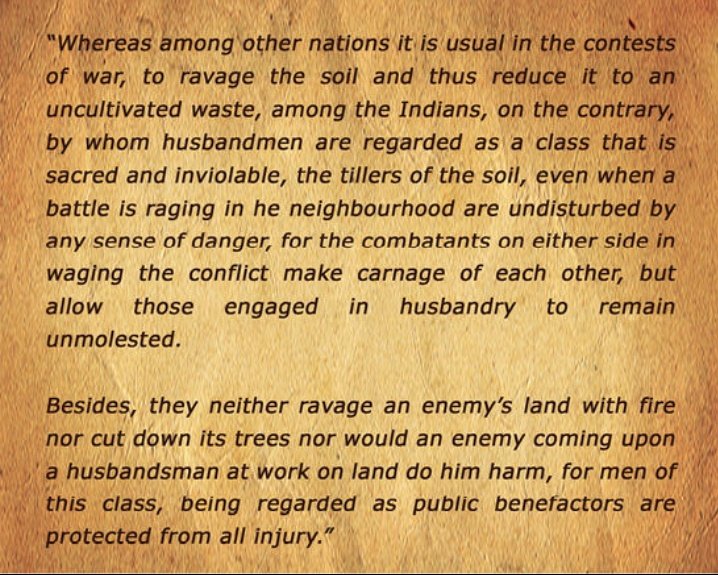 " title="(12/n) One visitor, who had observed this and was amazed at this self-restraint was Megasthenes, the Greek chronicler, who had come along with Alexander of Macedonia in 326 BCE. He chronicled his observations on the concept of Dharma Yuddha in his book Indica, wherein he writeshttps://abs.twimg.com/emoji/v2/... draggable="false" alt="👇" title="Rückhand Zeigefinger nach unten" aria-label="Emoji: Rückhand Zeigefinger nach unten">" class="img-responsive" style="max-width:100%;"/>
" title="(12/n) One visitor, who had observed this and was amazed at this self-restraint was Megasthenes, the Greek chronicler, who had come along with Alexander of Macedonia in 326 BCE. He chronicled his observations on the concept of Dharma Yuddha in his book Indica, wherein he writeshttps://abs.twimg.com/emoji/v2/... draggable="false" alt="👇" title="Rückhand Zeigefinger nach unten" aria-label="Emoji: Rückhand Zeigefinger nach unten">" class="img-responsive" style="max-width:100%;"/>
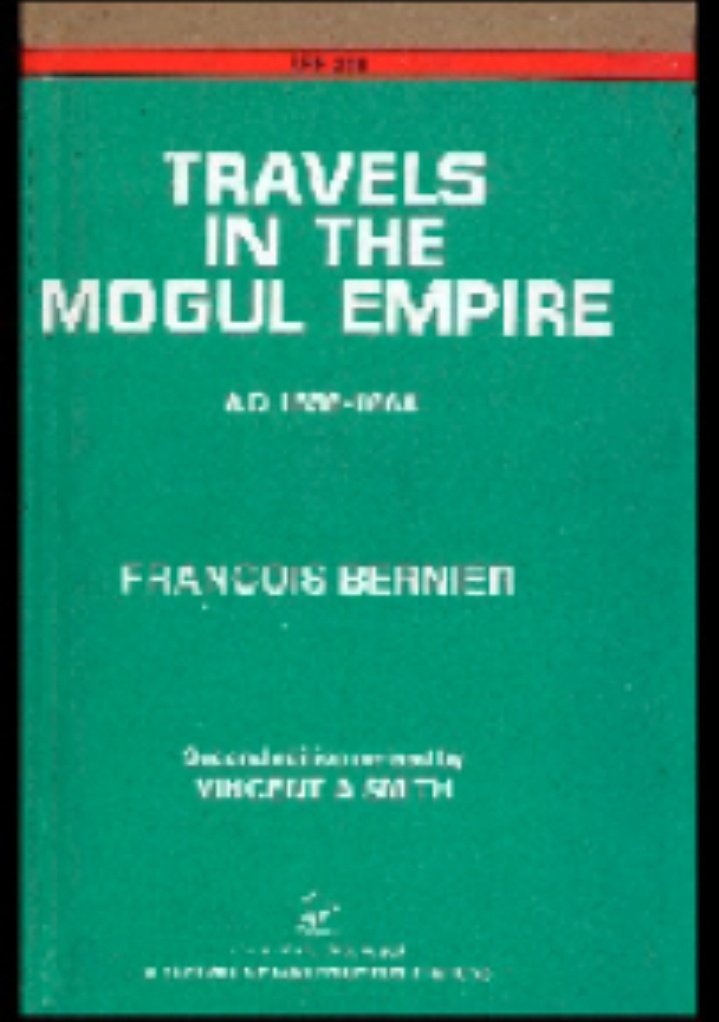
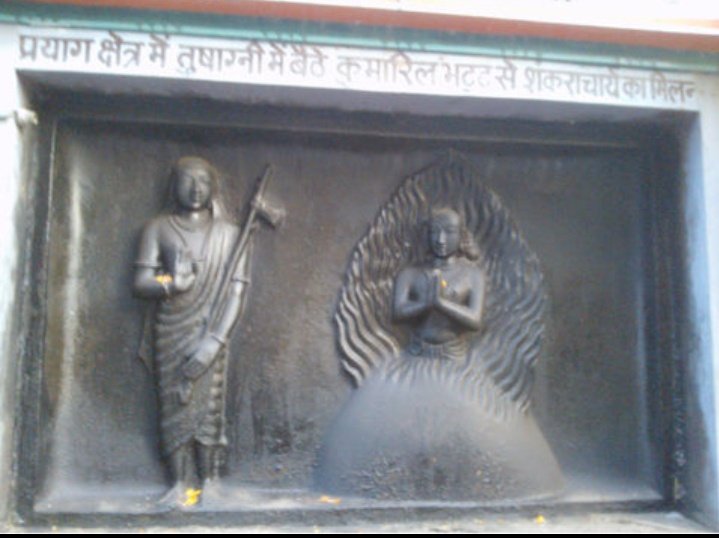 https://abs.twimg.com/emoji/v2/... draggable="false" alt="👇" title="Rückhand Zeigefinger nach unten" aria-label="Emoji: Rückhand Zeigefinger nach unten">https://abs.twimg.com/emoji/v2/... draggable="false" alt="👇" title="Rückhand Zeigefinger nach unten" aria-label="Emoji: Rückhand Zeigefinger nach unten">" title="(19/n) Panel displaying Adi Sankara’s meeting with Kumarila Bhatta at Prayag - A Case of Agni SamadhiSource – Sri Kanchi Sankara Math, Prayaghttps://abs.twimg.com/emoji/v2/... draggable="false" alt="👇" title="Rückhand Zeigefinger nach unten" aria-label="Emoji: Rückhand Zeigefinger nach unten">https://abs.twimg.com/emoji/v2/... draggable="false" alt="👇" title="Rückhand Zeigefinger nach unten" aria-label="Emoji: Rückhand Zeigefinger nach unten">https://abs.twimg.com/emoji/v2/... draggable="false" alt="👇" title="Rückhand Zeigefinger nach unten" aria-label="Emoji: Rückhand Zeigefinger nach unten">" class="img-responsive" style="max-width:100%;"/>
https://abs.twimg.com/emoji/v2/... draggable="false" alt="👇" title="Rückhand Zeigefinger nach unten" aria-label="Emoji: Rückhand Zeigefinger nach unten">https://abs.twimg.com/emoji/v2/... draggable="false" alt="👇" title="Rückhand Zeigefinger nach unten" aria-label="Emoji: Rückhand Zeigefinger nach unten">" title="(19/n) Panel displaying Adi Sankara’s meeting with Kumarila Bhatta at Prayag - A Case of Agni SamadhiSource – Sri Kanchi Sankara Math, Prayaghttps://abs.twimg.com/emoji/v2/... draggable="false" alt="👇" title="Rückhand Zeigefinger nach unten" aria-label="Emoji: Rückhand Zeigefinger nach unten">https://abs.twimg.com/emoji/v2/... draggable="false" alt="👇" title="Rückhand Zeigefinger nach unten" aria-label="Emoji: Rückhand Zeigefinger nach unten">https://abs.twimg.com/emoji/v2/... draggable="false" alt="👇" title="Rückhand Zeigefinger nach unten" aria-label="Emoji: Rückhand Zeigefinger nach unten">" class="img-responsive" style="max-width:100%;"/>
